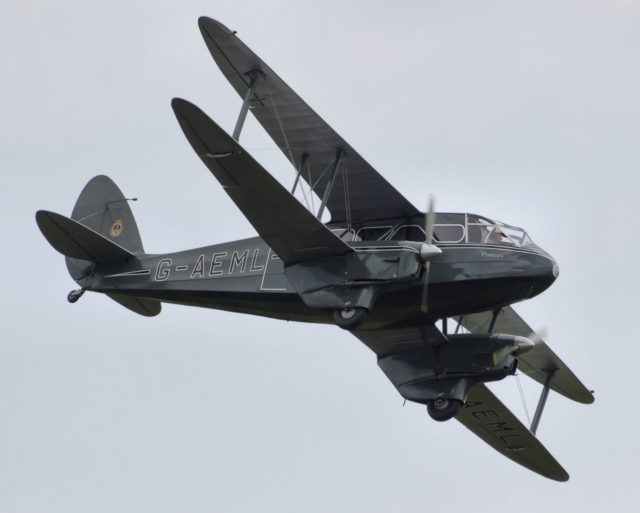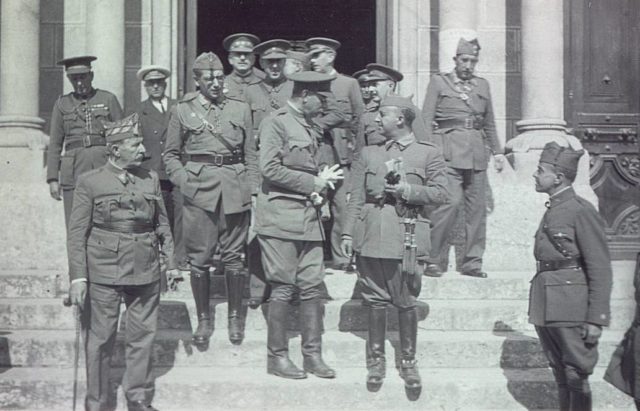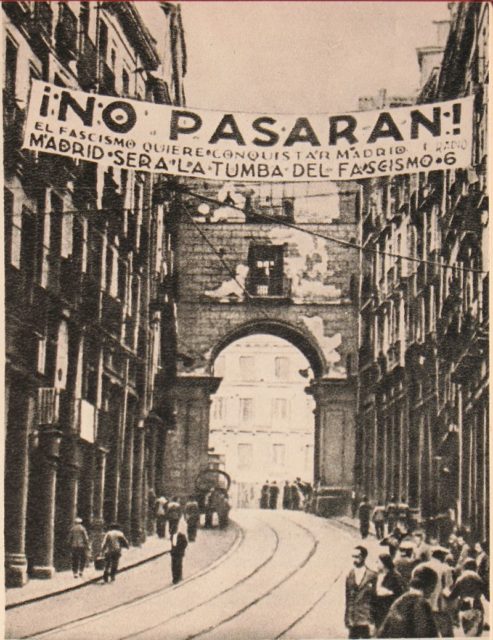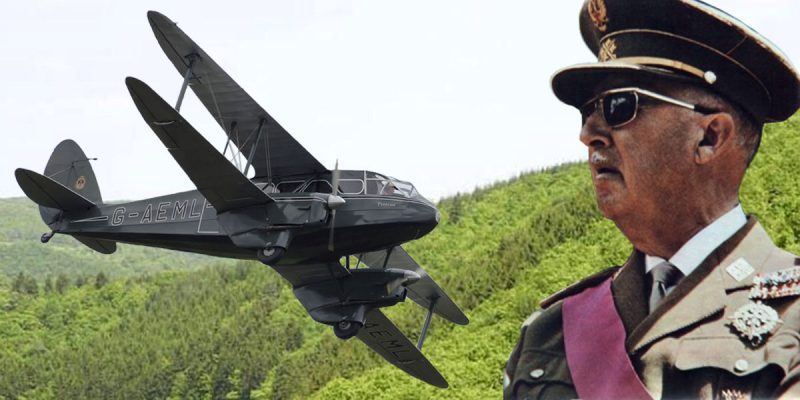More than 600,000 people lost their lives in the Spanish Civil War. At its end, in April 1939, General Francisco Franco had won, and he ruled the country for the next 36 years. The war has been described as a struggle between democracy and fascism.
In many cases, historic conflicts are triggered by seemingly insignificant people who by their actions manage to leave a huge impact. One example is the Bosnian Serb anarchist who killed Archduke Franz Ferdinand, triggering World War I.
In the case of the Spanish Civil War, an unspectacular British pilot changed history by giving Franco the opportunity to get out of a country unnoticed by authorities and organize his troops. The influence of citizens in the internal affairs of other countries, a practice throughout history, is, then, something to consider. How did it all begin?

One July morning in 1936, Captain Cecil Bebb started his Dragon Rapide aircraft in what was supposed to look like a vacation trip. His passengers were Cecil’s friend, Major Hugh Pollard (a known British intelligence service operative), Diana Pollard, his daughter, and Dorothy Watson, her friend. They took off from Croydon Airport in London and reported that they were flying to the Canary Islands, but their real destination and intentions were much more sinister. The plane was supposed to take Franco from his post on the Canaries and bring him to his loyal troops stationed in Spanish Morocco.

In February 1936, Franco was banished to the Canary Islands to serve there as a commander of the Spanish forces. His deployment was a form of punishment for his rebellious actions against the Second Spanish Republic. Meanwhile, Emilio Mola (another Spanish nationalist general and the inventor of the term “fifth column”) was plotting the military uprising that led to the Spanish Civil War. He contacted Franco in June the same year, and a military coup was put into motion. In mid-July, the Spanish Army of Africa rebelled, and General Franco was chosen as their leader, but he needed to be there to command them. This is where the British pilot came in.
Franco couldn’t just fly to Africa. If he had taken a Spanish plane, the Spanish government would certainly know about it and stop him. He needed help from the outside. This suspicious plane trip, which was possibly “booked” by the British secret service, was meticulously planned during a casual lunch at Simpson’s restaurant in the Strand.

Hugh Pollard, Cecil’s companion on the plane, was an intelligence officer who was involved in operations during the Irish War of Independence (1919–1921). At one point he was contacted by Douglas Francis Jerrold (editor of the conservative newspaper English Review and also a British intelligence operative) and invited on a lunch together with Luis Bolin, who was the London correspondent of the ABC Newspaper. Bolin later became the main press advisor of Franco, which is probably not a coincidence. During that lunch, Jerrold managed to persuade Pollard to participate in the Franco “expedition.” Pollard then informed his friend and former MI6 colleague, Cecil Bebb, and he accepted.
The de Havilland Dragon Rapide aircraft flew from London on July 11, 1936. When they arrived on the Canary Islands, Franco was already informed and waiting for the British officers to pick him up. The whole journey was undetected by the authorities and Franco was taken to Tetuan, Morroco, on July 19. He immediately began to assemble the Spanish troops and prepare them for the coup.
Although it is obvious that there was some kind of external influence on this awful moment in history, the British involvement hasn’t been confirmed. The British government was officially neutral toward the Spanish Civil War issue during that time. Either the British authorities knew about Cecil’s and Pollard’s actions and sanctioned it, or the men acted on their own for a generous financial reward.

In an interview that Cecil made years later, for The Spanish Civil War (1983), a documentary made by Granada television, he said some pretty unbelievable things about his participation in the war: He said that a Spanish man had come to him and asked him if he would like to fly to the Canaries and pick up a rebellious general and help initiate a military coup in Spain. Cecil then told the reporter that the plan sounded like a great adventure to him and he accepted.
For his services to Franco and his regime, Cecil Bebb received three military decorations: the Grand Cross of the Imperial Order of the Yoke and Arrows (1939) and later in 1970, he received the Order of Civil Merit and the White Cross for Military Merit. For plane enthusiasts, the plane that Cecil used during this “mission,” the dH89 Dragon Rapide, was given to Franco as a gift and can now be seen in the Museo del Aire in Madrid.
